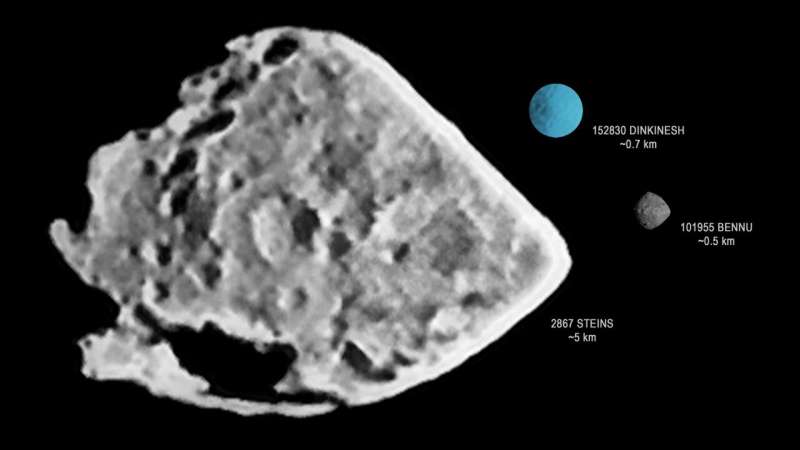This article has been reviewed according to Science X's editorial process and policies. Editors have highlighted the following attributes while ensuring the content's credibility:
fact-checked
trusted source
proofread
NASA's Lucy spacecraft continues approach to asteroid Dinkinesh

Since NASA's Lucy spacecraft first imaged the asteroid Dinkinesh on Sept. 3, 2023, Lucy has traveled over 33 million miles (54 million km) and is now 4.7 million miles (7.6 million km) away from the small asteroid. However, as Dinkinesh continues on its orbit around the sun, Lucy still has another almost 16 million miles (25 million km) to travel to its meet-up with the asteroid on Nov. 1.
Over the last month, the spacecraft team has seen the target asteroid generally brightening as Lucy approaches it and has also seen a subtle brightness variation consistent with the previously observed 52.7-hour rotation period. Since Lucy first observed the asteroid on Sept. 3, the team has used images collected by the spacecraft's high-resolution camera, L'LORRI, to refine their knowledge of the relative positions of the spacecraft and asteroid, optically navigating Lucy towards the encounter.
Using this information, on Sept. 29 the spacecraft carried out a small trajectory correction maneuver, changing the spacecraft's speed by just 6 cm/s (around 0.1 mph). This nudge is predicted to send the spacecraft on a path that will pass within 265 miles (425 km) of the asteroid. In late October the team will have another opportunity to adjust the trajectory if necessary.
On Oct. 6, the spacecraft passed behind the sun as viewed from Earth, beginning a planned communications blackout. The spacecraft has continued to image the asteroid and will return these images to Earth once communications resume after the end of the solar conjunction period in mid-October.
Lucy's principal investigator, Hal Levison, is based out of the Boulder, Colorado, branch of Southwest Research Institute, headquartered in San Antonio, Texas. NASA's Goddard Space Flight Center in Greenbelt, Maryland, provides overall mission management, systems engineering, and safety and mission assurance. Lockheed Martin Space in Littleton, Colorado, built the spacecraft.
Lucy is the 13th mission in NASA's Discovery Program. NASA's Marshall Space Flight Center in Huntsville, Alabama, manages the Discovery Program for the Science Mission Directorate at NASA Headquarters in Washington.
Provided by NASA's Goddard Space Flight Center




















